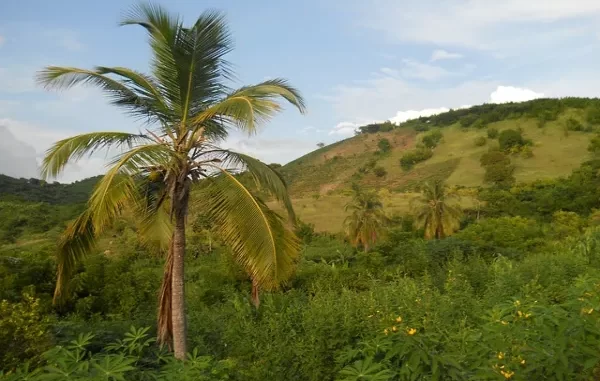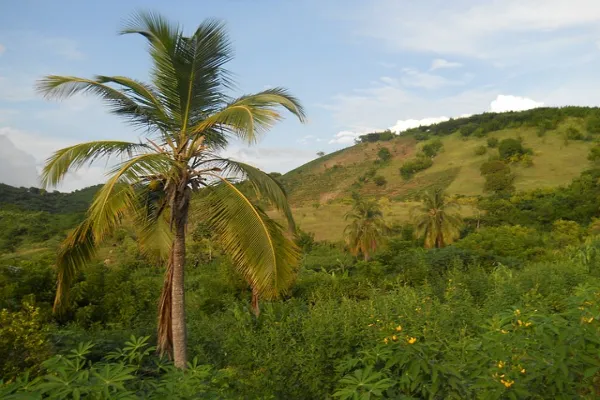
Facts About Haiti: A Tapestry of Resilience, History, and Vibrant Culture
Haiti, nestled on the western side of the island of Hispaniola in the Caribbean, is a nation with a tumultuous history, rich culture, and an indomitable spirit. Despite facing numerous challenges, Haiti’s unique blend of African, indigenous, and European influences has shaped a vibrant society. In this article, we’ll delve into some compelling facts about Haiti that showcase the resilience and cultural richness of this Caribbean gem.
- Historic Independence:
- Haiti holds the distinction of being the first independent nation in Latin America and the Caribbean, gaining independence from French colonial rule on January 1, 1804. The Haitian Revolution, led by Toussaint Louverture and Jean-Jacques Dessalines, remains a pivotal event in history.
- Kreyòl Ayisyen Language:
- Haitian Creole, known as Kreyòl Ayisyen, is the country’s official language and is spoken by the majority of the population. It is a unique creole language with roots in French, African languages, and indigenous Taino influences.
- Citadelle Laferrière:
- Perched atop a mountain near the town of Milot, the Citadelle Laferrière is a formidable fortress and a symbol of Haiti’s commitment to freedom. Built after gaining independence, it stands as the largest fortress in the Americas and is a UNESCO World Heritage Site.
- Vodou Spirituality:
- Vodou, often misunderstood, is a syncretic religion that blends African, indigenous, and Catholic beliefs. It plays a significant role in Haitian culture, encompassing rituals, ceremonies, and a deep connection with the spirits (lwa).
- Breathtaking Landscapes:
- Haiti boasts stunning natural beauty, from lush mountains and waterfalls to pristine beaches. The Bassin Bleu, a series of three cobalt-blue waterfalls surrounded by tropical foliage, is just one example of Haiti’s picturesque landscapes.
- Rich Artistic Heritage:
- Haitian art is celebrated globally for its vibrant colors and cultural significance. The country is renowned for its distinctive style of painting, often depicting scenes of daily life, vodou rituals, and the resilience of the Haitian people.
- Mountains and Plains:
- Haiti’s topography is diverse, featuring mountainous regions like the Massif de la Hotte and expansive plains such as the Artibonite Valley. These geographical features contribute to both the challenges and the unique beauty of the nation.
- Cultural Festivals:
- Carnival in Haiti is a lively and colorful celebration that takes place in the weeks leading up to Lent. Parades, music, dance, and elaborate costumes are integral parts of this festive season, showcasing the vibrancy of Haitian culture.
- Environmental Challenges:
- Haiti has faced environmental challenges, including deforestation and natural disasters. The 2010 earthquake was a devastating event that highlighted the nation’s need for international support and resilience in the face of adversity.
- Hospitality and Community:
- Despite economic challenges, the Haitian people are known for their warmth, hospitality, and a strong sense of community. Visitors often find themselves captivated by the genuine and friendly nature of the locals.

Haiti: A Tapestry of Independence, Vodou Spirituality, and Cultural Resilience
Haiti, situated on the western side of the island of Hispaniola, is a nation with a rich and complex history that has significantly shaped its identity. It holds the distinction of being the first independent nation in Latin America and the Caribbean, gaining freedom from French colonial rule through a successful revolution led by Toussaint Louverture and Jean-Jacques Dessalines.
This revolutionary spirit is embedded in the country’s culture, and Vodou, a syncretic religion combining African, indigenous, and Catholic beliefs, plays a significant role in shaping Haitian spirituality. Misunderstood by many, Vodou is a vital part of Haiti’s cultural heritage, with rituals, ceremonies, and a deep connection to the spirits, known as lwa.
Haiti’s landscape is as diverse as its cultural tapestry. The Citadelle Laferrière, an imposing fortress perched atop a mountain near Milot, stands as a symbol of Haiti’s commitment to freedom and resilience. Designated as a UNESCO World Heritage Site, it is the largest fortress in the Americas. Haiti’s artistry also shines globally, with its distinctive style of painting celebrated for its vibrant colors and cultural significance.
Despite facing environmental challenges, including deforestation and natural disasters, Haiti remains a nation of resilience, with its people known for their warmth, hospitality, and a strong sense of community. As the country continues to rebuild and redefine itself, the world is invited to appreciate the unique blend of history, spirituality, and creativity that defines the spirit of Haiti.
Haiti, with its historic journey to independence, cultural tapestry, and breathtaking landscapes, is a nation that continues to inspire and captivate. Beyond the headlines, Haiti’s story is one of resilience, pride, and the enduring spirit of a people who have shaped their destiny with determination and strength.






Leave a Reply